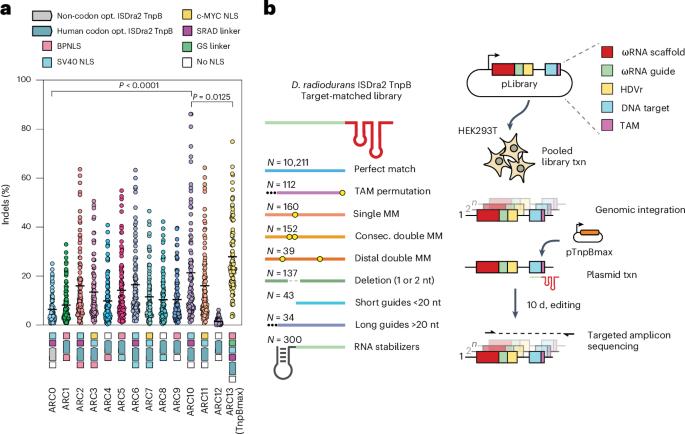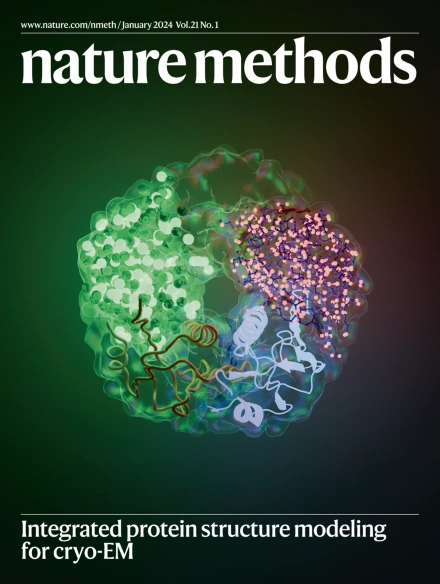利用类似 CRISPR-Cas 的转座子扩展基因组编辑工具箱。
IF 36.1
1区 生物学
Q1 BIOCHEMICAL RESEARCH METHODS
引用次数: 0
摘要
与CRISPR-Cas系统类似,细菌转座子中的TnpB蛋白也可以作为RNA引导的内切酶用于基因组编辑。通过将合理的蛋白质设计与机器学习相结合,开发出了编辑效率更高、靶向范围更广的 ISDra2 TnpB 变体,以及设计有效引导 RNA 的预测工具。本文章由计算机程序翻译,如有差异,请以英文原文为准。

Expanding the genome editing toolbox with designer CRISPR–Cas-like transposons
Similarly to CRISPR–Cas systems, TnpB proteins from bacterial transposons can be employed as RNA-guided endonucleases for genome editing. By combining rational protein design and machine learning, ISDra2 TnpB variants with enhanced editing efficiency and a broader targeting range were developed, along with a prediction tool to design effective guiding RNAs.
求助全文
通过发布文献求助,成功后即可免费获取论文全文。
去求助
来源期刊

Nature Methods
生物-生化研究方法
CiteScore
58.70
自引率
1.70%
发文量
326
审稿时长
1 months
期刊介绍:
Nature Methods is a monthly journal that focuses on publishing innovative methods and substantial enhancements to fundamental life sciences research techniques. Geared towards a diverse, interdisciplinary readership of researchers in academia and industry engaged in laboratory work, the journal offers new tools for research and emphasizes the immediate practical significance of the featured work. It publishes primary research papers and reviews recent technical and methodological advancements, with a particular interest in primary methods papers relevant to the biological and biomedical sciences. This includes methods rooted in chemistry with practical applications for studying biological problems.
 求助内容:
求助内容: 应助结果提醒方式:
应助结果提醒方式:


